BMW F 700 GS Review
Motorcycle Test by Jock McLauchlan – Photos by Geoff Osborne
If you’re not familiar with the BMW F 700 GS, prepare for confusion. It’s actually the same capacity as the F 800 GS but offers a slightly mellower engine, designed to ease the step from a LAMS machine onto the bigger and more powerful motorcycle.
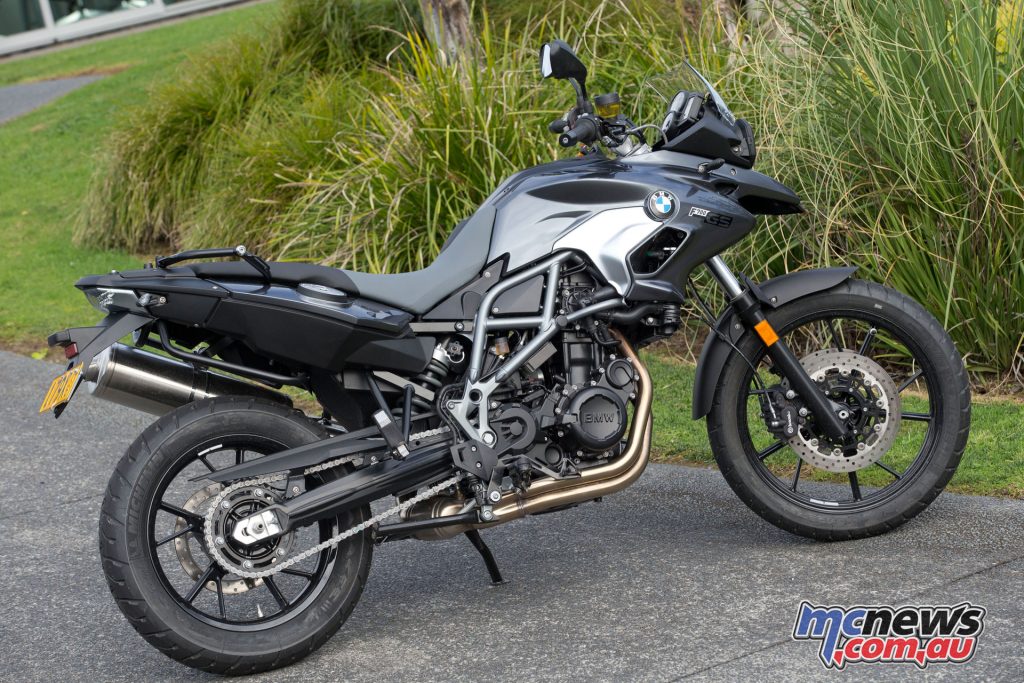
Hence the 700 tag… and the ongoing confusion. To ride the 700 though, it feels just as sprightly as the 800 machine, only lacking a whisker of top end by comparison and is still plenty quick enough for most riding.
While the 700 is a GS adventure machine, by name at least, it is really a road bike with adventure style ergonomics and riding position. It has cast alloy wheels with Michelin Anakee 3, 140/80-17 and 110/80-19 tyres. Of course, that does not preclude it from gravel roads or very light off-road work, and it can be fitted with knobbly tyres of course.
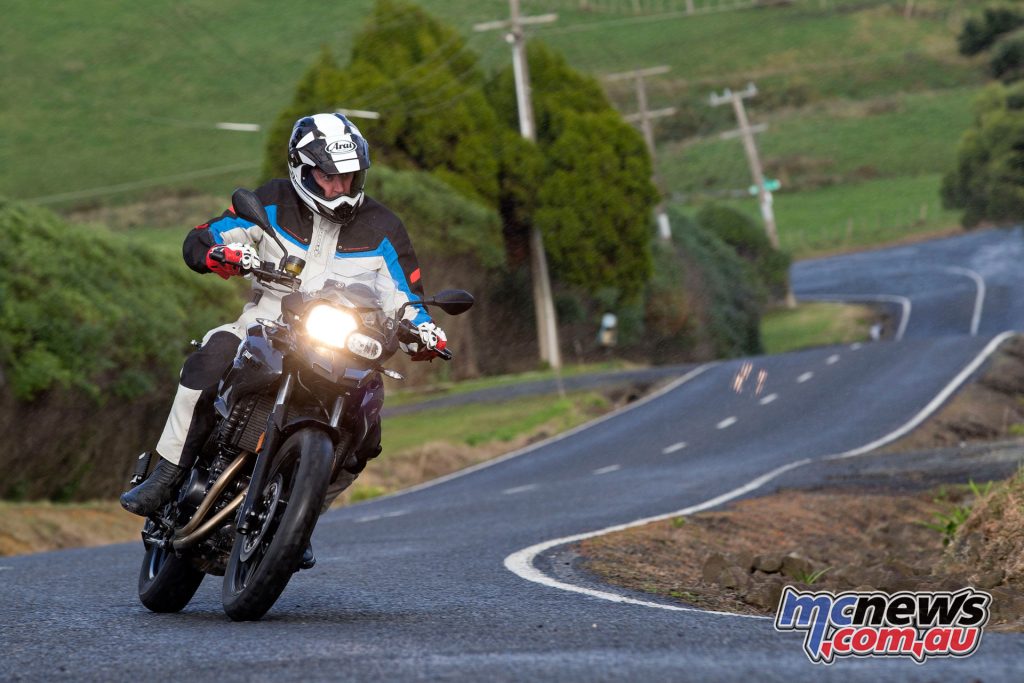
But in reality, it is predominately a road bike with comfy ergos. It has a short, relatively ugly, square-cut non-adjustable screen above the signature GS asymmetrical headlights. I must say, the screen actually works okay as long as you’re not looking for total weather protection.
The wind-blast hit me high-ish on the chest and kept much of the winter chill at bay. It was also quiet with zero buffeting for me – it is a decent screen. The seat turns out to be comfortable, but not height adjustable. The standard height is 820mm; however there are four optional seats available that offer a potential seat height range from 765mm to 860mm – that should ensure a comfy height for most, if not all.
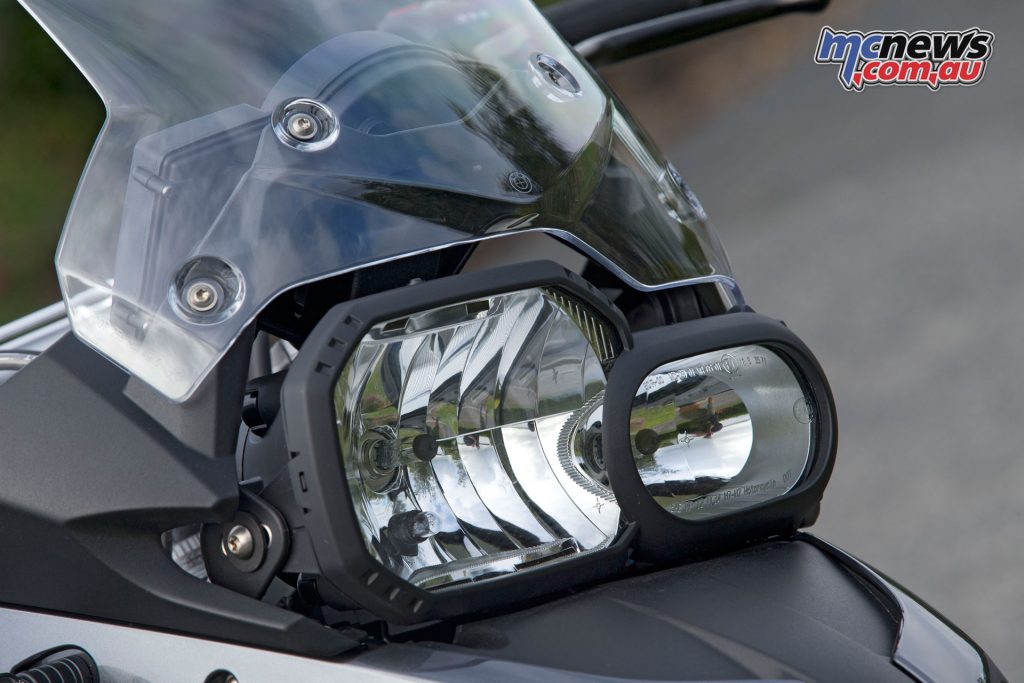
Heated grips come standard with two options. Nice and warm, to fully toasty – excellent. Maybe I’ve gone soft… but I’m beginning to truly embrace heated grips.
The dash’ has an analogue speedometer mounted above an analogue tachometer that is clear and easy to read. An LCD is mounted to the side with all the usual info such as fuel level, trip, time and warning lights.
Happily, for easy maintenance in the garage at home a centre stand comes standard on the 700 as well as the normal kick stand. In general all controls are easy to operate, the ergos are comfortable and relaxed with a sensible, logical and commanding riding position.
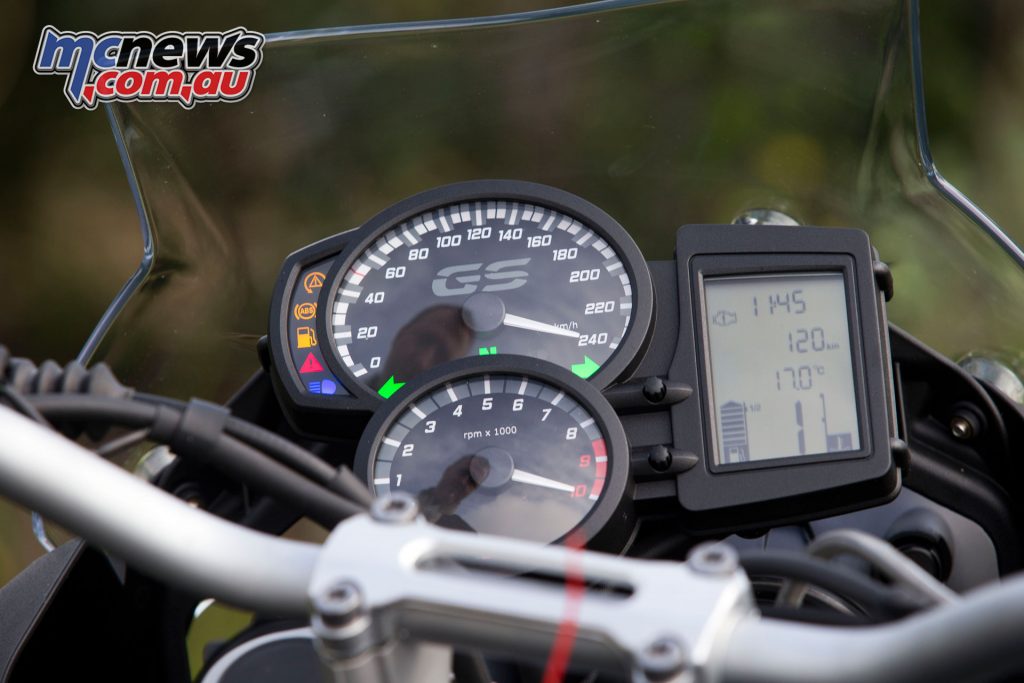
Riding the 700 is actually very pleasant. The 798cc engine is engaging, responsive and, in the main, smooth. A few vibes do show up at high revs, but because the DOHC eight-valve, liquid-cooled parallel twin is decently torquey there is no real need to go all the way up in the rev range.
Torque peaks at 5300rpm with 77Nm, but most of that seems available much lower down in the reve range, making for a flexible, easy power delivery. Short-shifting below 5000rpm makes for decently rapid progress, yet the engine still feels very smooth and relaxed.
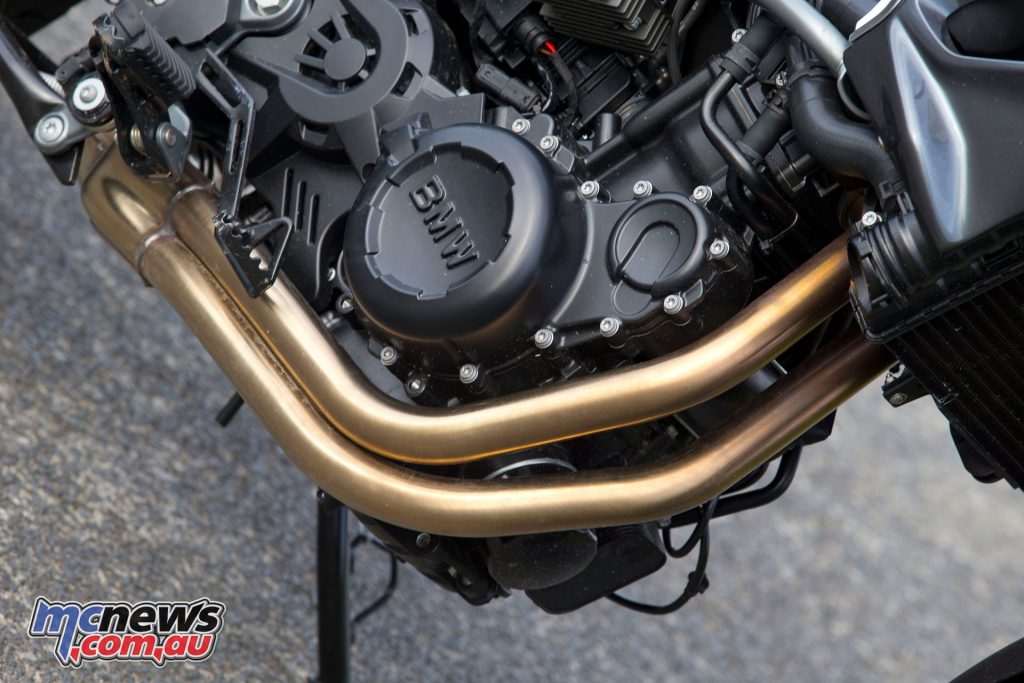
Peak power of 75hp is reached at 7300rpm, but as mentioned it is not really necessary, or desirable, to rev the engine that hard… if you must go that much faster perhaps the big daddy GS, the 1200, would be a better choice.
I like this motor; it gets the job done with ease and no fuss. The only slight issue I have with the engine is the six-speed gearbox has a high first gear – it will run up to about 100km/h in first gear at the redline. This tall gear means when manoeuvring on a very soft surface, such as sand, the engine is inclined to stall at near idle revs because the ASC (Automatic Stability Control) cuts in…
That’s traction control to most people and, like other TC systems, it simply cannot compute soft sand and low revs. It goes like this – you go to take off, the rear tyre slips in the sand a little, the power is cut, the engine stalls – it’s a pain in the arse and all brands and models with TC have the same issue.
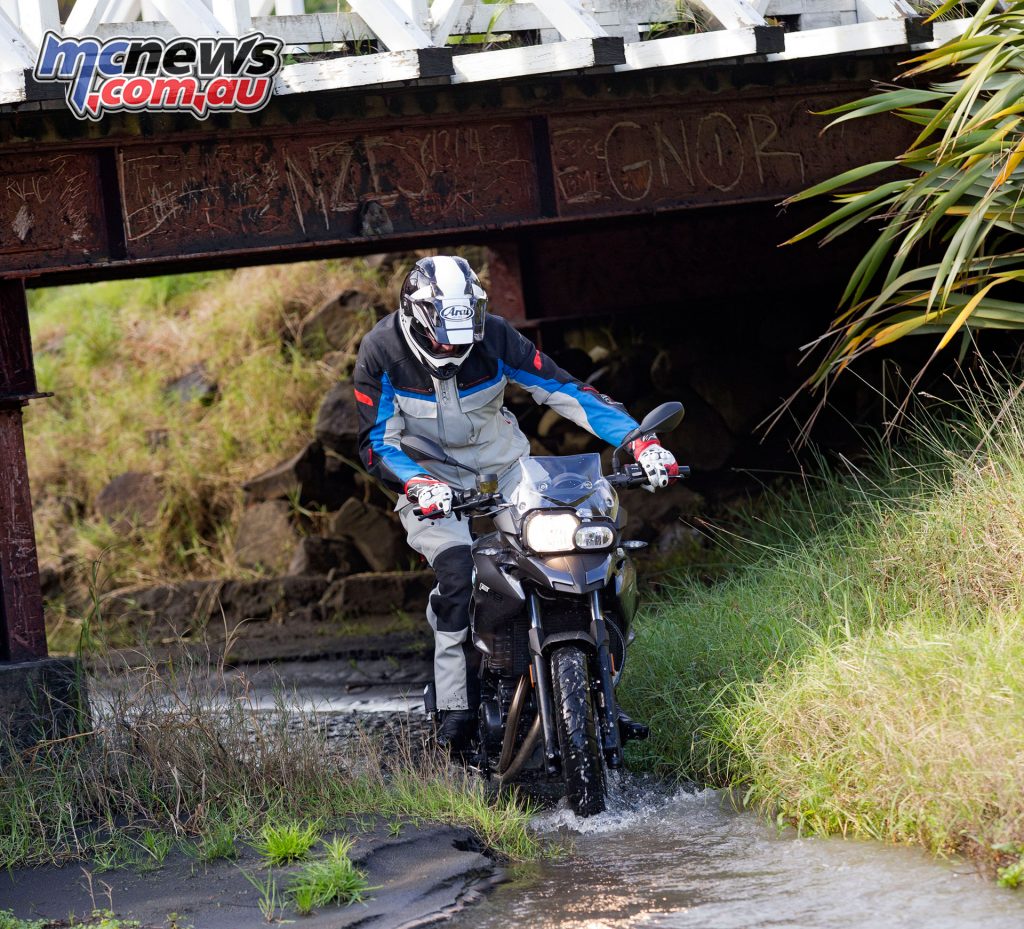
Switch the traction control off and the bike takes off perfectly. But I guess not too many riders will ride one on the sand, and on hard surfaces the problem does not exist.
The 700 is a very neutral handling machine on the road, almost in spite of its quick-ish 26-degree steering head angle; it’s agile and stable in equal measure. This makes for an effortless confidence inspiring ride that few would fault at all but totally unreasonable speeds.
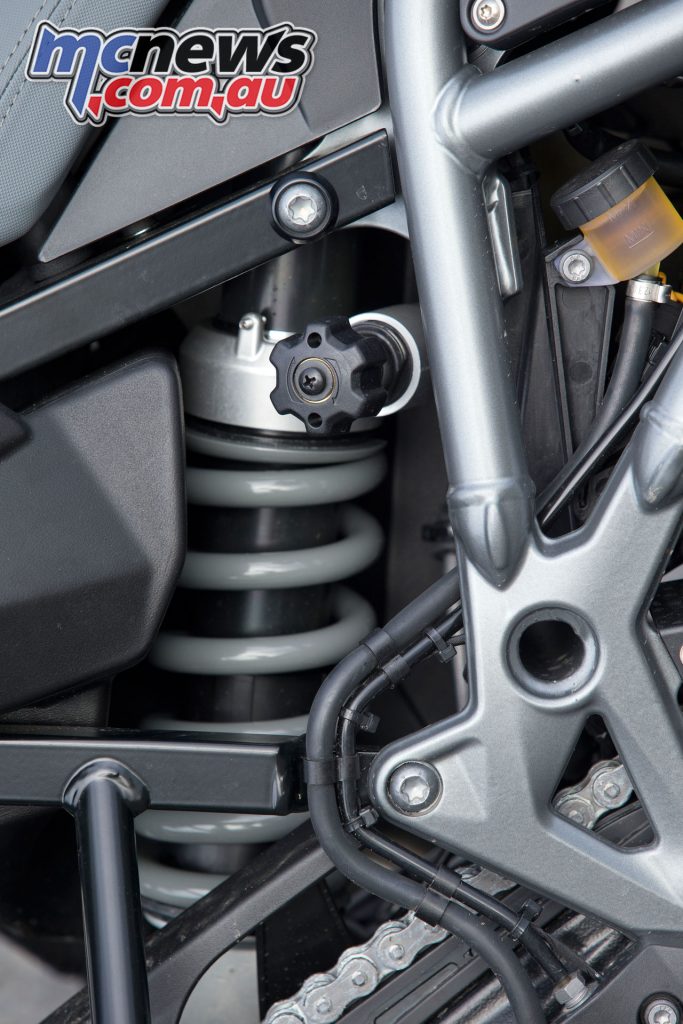
The ESA single shock rear suspension is at the basic end of the electronic suspenders spectrum. It has 165mm wheel travel and while easily adjustable on the fly for damping, it does not adjust spring preload too. This is still readily done by the hand operated wheel though. So, the ESA (Electronic Suspension Adjustment) modes only alter the damping for sport, normal and comfort.
On the road normal was fine, but I actually used the comfort setting most and only sport a few times because it was there. Comfort really is comfortable and while sport does stiffen things up, it is not really in keeping with how the rest of the bike operates.
It is not a race bike and does not really like to be ridden as such. That is not to say it can’t be ridden quite briskly though. It is more the fact that the 700 operates beautifully within reasonable bounds and is not designed or that happy when pushed extremely hard.
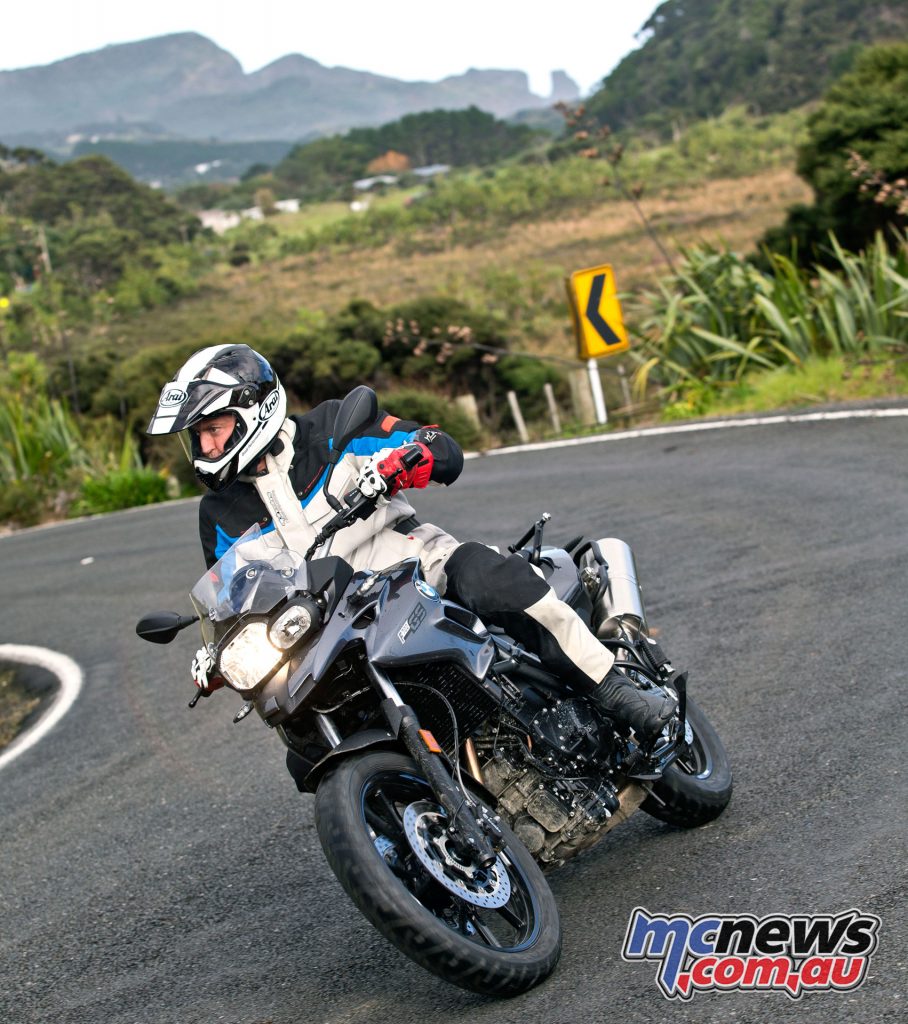
An indication of this is the conventional leading axle 41mm forks with 170mm travel that are not adjustable. However the action is great, a decent compromise between a confident, comfortable ride at reasonable speeds, and up to maintaining good control when the speeds rise while pressing on.
At 209kg wet with the under-seat 16-litre fuel tank topped up, it is at the lighter end of the spectrum for multi-cylinder adventure-style machines and it feels reasonably light to ride too.
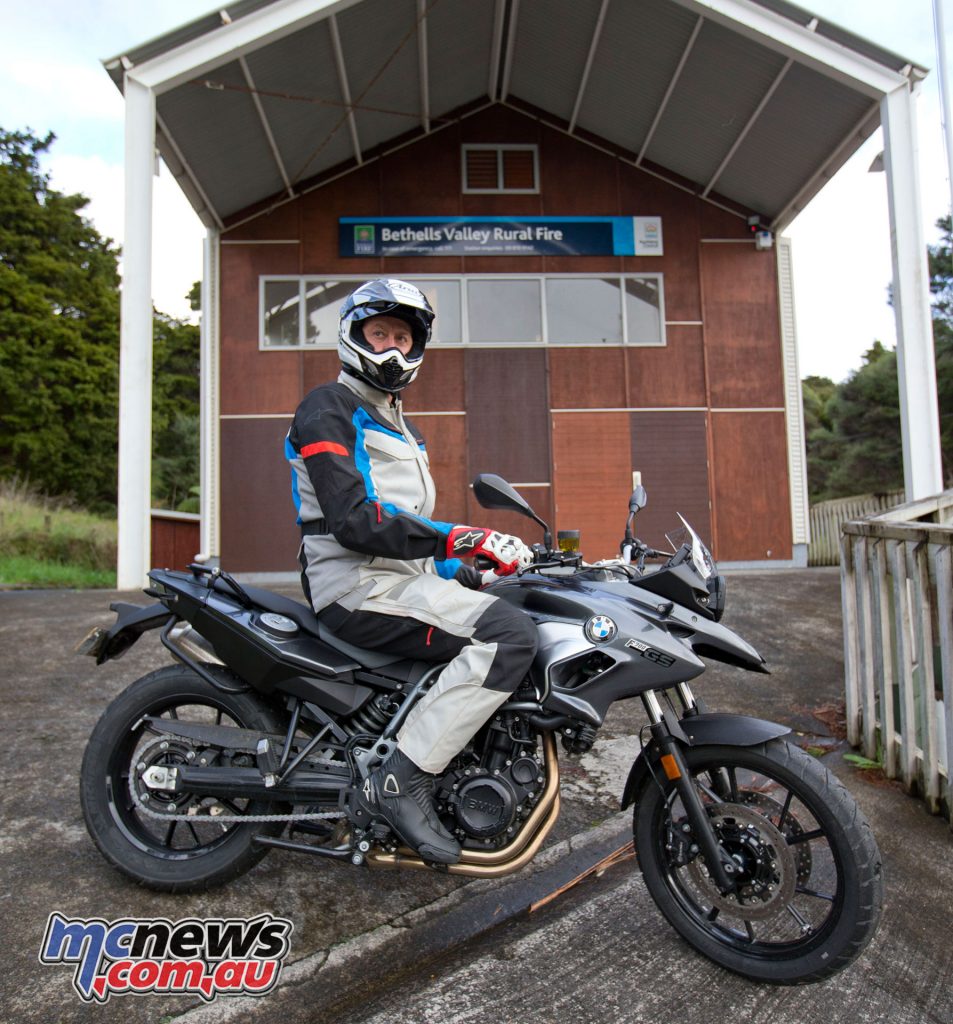
The brakes have no real issues bringing the machine to a quick stop when required, and offer decent feel but in no way could they be confused with stunning superbike style brakes. The twin 300mm floating front discs and floating twin piston Brembo calipers are certainly adequate without being over kill. Fit for purpose springs to mind.
Out back a solid mounted 265mm disc with single piston Brembo floating caliper does the business. Both ends have switchable ABS that functions very well and can be deactivated for off-road use. Despite what the factories try to tell you, it is still essential to be able to turn the ABS off for genuine off-road work… whether this bike ever sees that usage is another story.
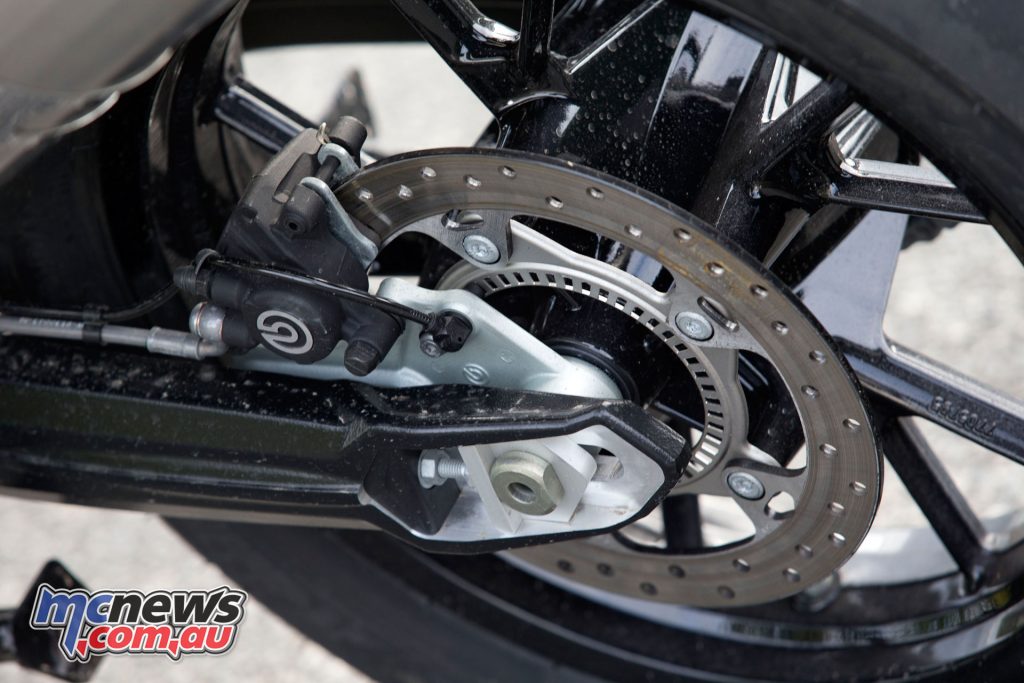
To sum up, BMW’s F700GS is a genuinely nice bike and great to ride. While it may not really get the blood pumping fast for an expert rider it is more than enough for what most riders need in all reality. And it makes a great first adventure-style machine for less experienced or smaller riders.
It is fast enough, very comfortable, handles well, frugal on the gas and has some great creature comforts. Be it touring, commuting or general exploring it is a very likeable, comfortable and capable machine.
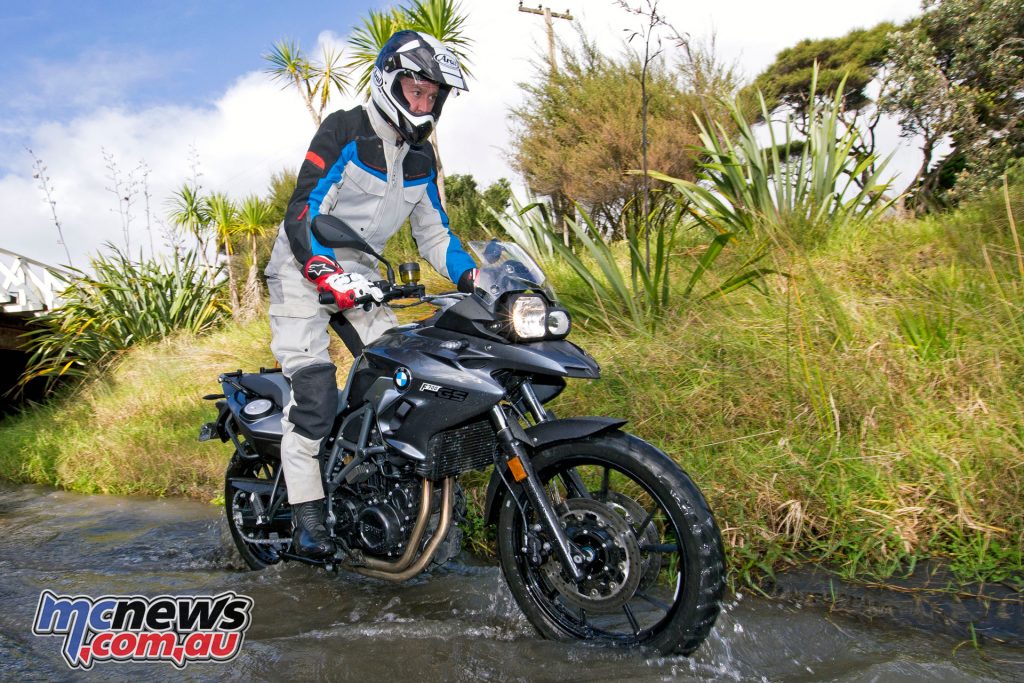
Be honest, are you really going to need the 21-inch front wheel from the 800 GS for serious dirt adventures? If you don’t, the 700 is probably the pick of the range when you consider the price.
BMW F 700 GS Pros & Cons
- Strong point – User friendly in every way
- Weak point – Beauty is in the eye of the beholder…
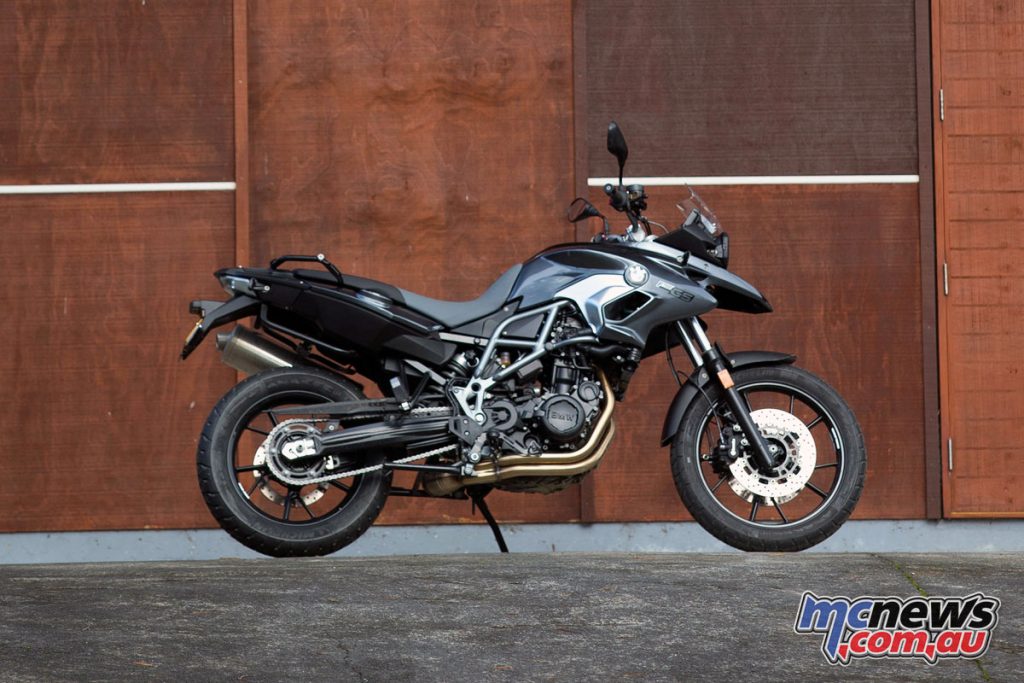
Second Opinion – Linda Glasswell F 700 GS Owner
I am not a very confident off road rider, but I still love it, and can do it happily within my capabilities. I am what I call ‘slow, but steady’. I usually arrive on time and without mishap, unlike some of my co-riders who go faster but don’t make it round some corners.
If the bike was bigger, heavier and faster I would come a cropper, or find it just too much like hard work. Although I had to be persuaded, I sold my lovely F 650 GS to make way for my new F 700 GS twin, (still an 800cc), at the end of 2015.
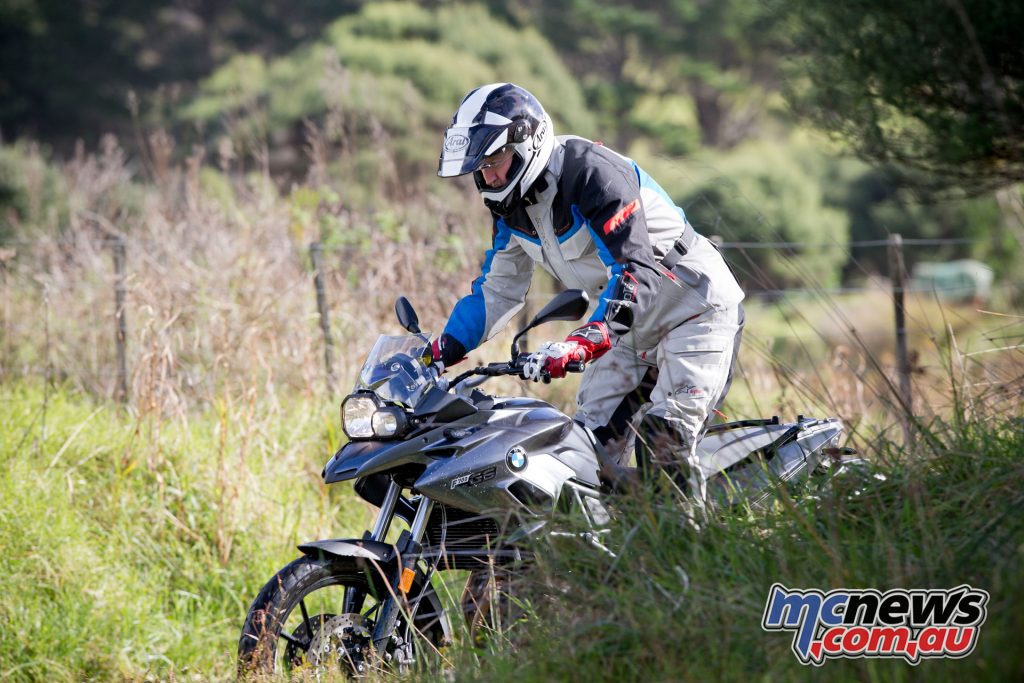
As a baby boomer with my pension looming, I realised I wouldn’t be able to afford a new bike again, so this would be my ‘last hurrah’ of a bike. It has more power and better braking, as well as traction control and improved suspension.
Of course, it has the mandatory heated grips (think, winter rides) and while I have tried umpteen times to activate the traction control off road, I had to really ride ‘badly’; accelerating hard over very gnarly gravel before those traction lights would light up. So I learnt that I can be much harsher and aggressive with my riding before I even vaguely reach the limits of the bike. Good to know.
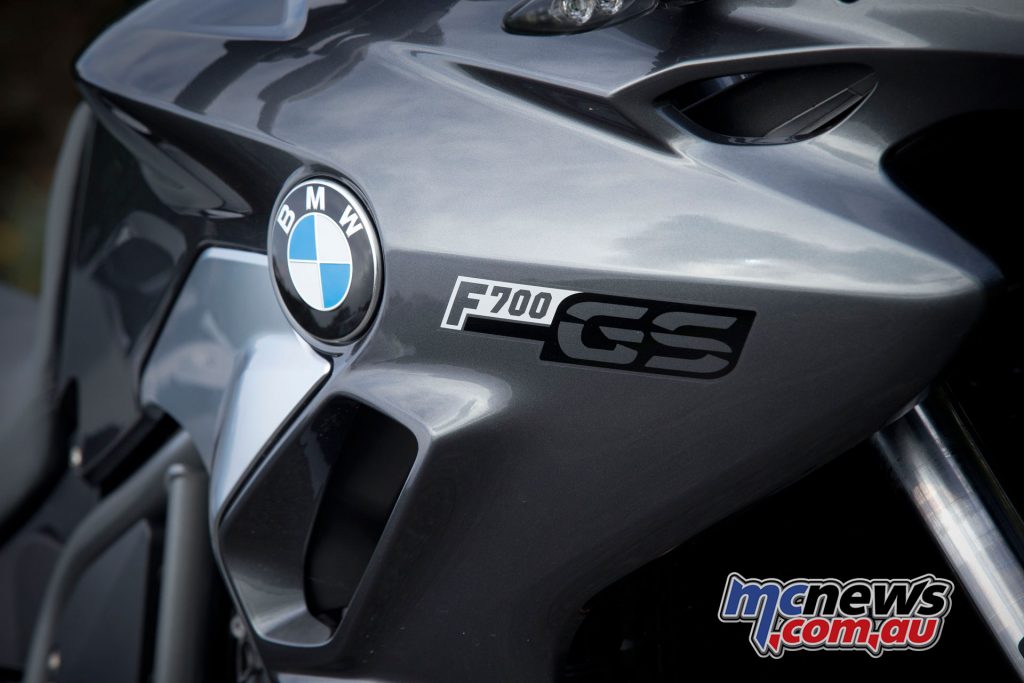
The other week, riding off-road with friends, I nearly fell off. I had the biggest slide ever, with my bum right off the seat and the bike bucking and turning, with the traction light probably on – but I was too busy to look – and I swear I should have come off. But the traction control kept me on, and I never touched the brakes or the throttle, I just kept going, looking ahead.
The rider behind corroborated my near ‘off’, and when I said, “It probably felt worse than it looked”, he said, “No, it looked pretty bad!” Instead of frightening me, this incident just makes me trust my bike like no other.
I can and do maintain my bike, but I am spoiled, having a husband who rides also, and being technical, he looks after my GS while looking after his own. However, I have lubed my own chain, with his help (although he always adjusts it), as it’s easy to tip the ‘bike right over onto its sidestand to free up the back wheel. I probably would not do it unassisted unless I really had to.
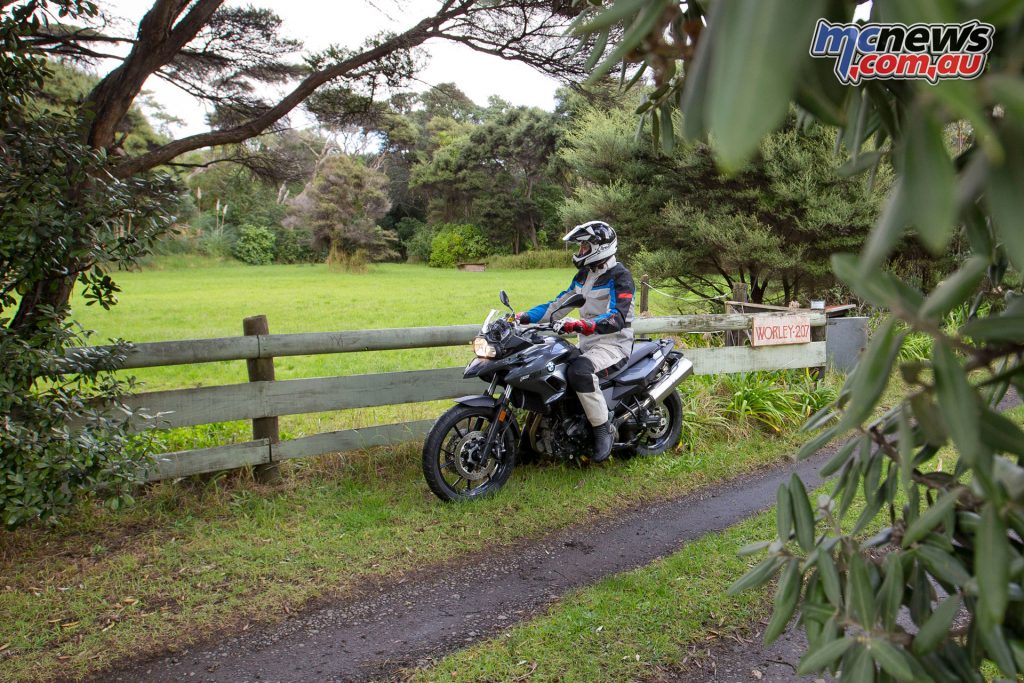
What I do find tricky is getting the GS onto its main stand, although I am told that if I did it more often it would free up a bit more. Getting it off the main stand though is a breeze. In my day to day riding, I never need to use the main stand though.
One thing I changed that wasn’t on the original is the exhaust pipe; I ‘borrowed’ my husband’s Akropovic a few years ago, and have kept it. To me, the sound of the exhaust accentuates in a smooth but powerful way what’s going on in the engine, making it easier to become tuned in to gear changes.
With greater time on some challenging sections, my road riding has improved; with roads that give you a corner every five seconds and is about 40 minutes each way (a no exit road). I learnt to ride in a higher rev range (5000rpm-plus) in third and fourth gear so that I didn’t need to either change gear or use the brakes.
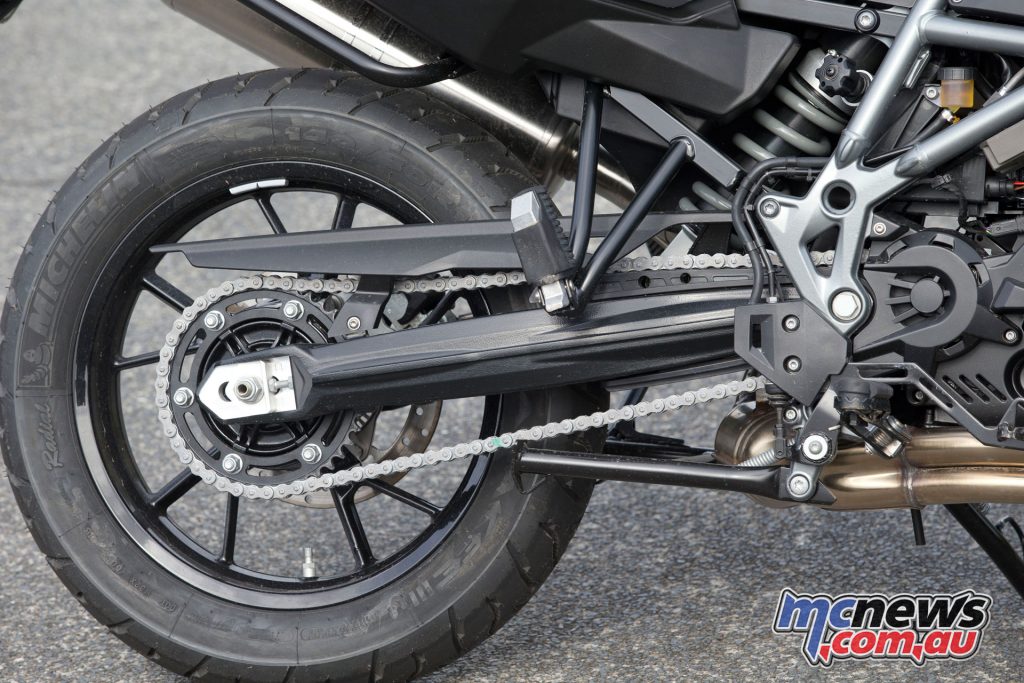
I love the gear box, especially with the Akropovic. My only complaint is that we adjusted the gear lever so that I can change up and down more easily while standing on the pegs off-road, so I often hit neutral going up into second while sitting. That’s something we are going to have to work on to get it just right.
Tyre-wise I currently use the standard Anakees the bike came with, which are dual purpose. If I am about to do some gnarly passes I change to TKC80s, as I don’t tend to chew them up much on the seal and they are ideal with mud and nastier stuff than gravel!
My GS looks and feels good to ride, and it’s kind to my riding, hiding my faults, making me look a much better rider. I understand that for some it’s not quite a road bike and it’s not quite an off road bike; it’s in-between, neither one thing nor the other.
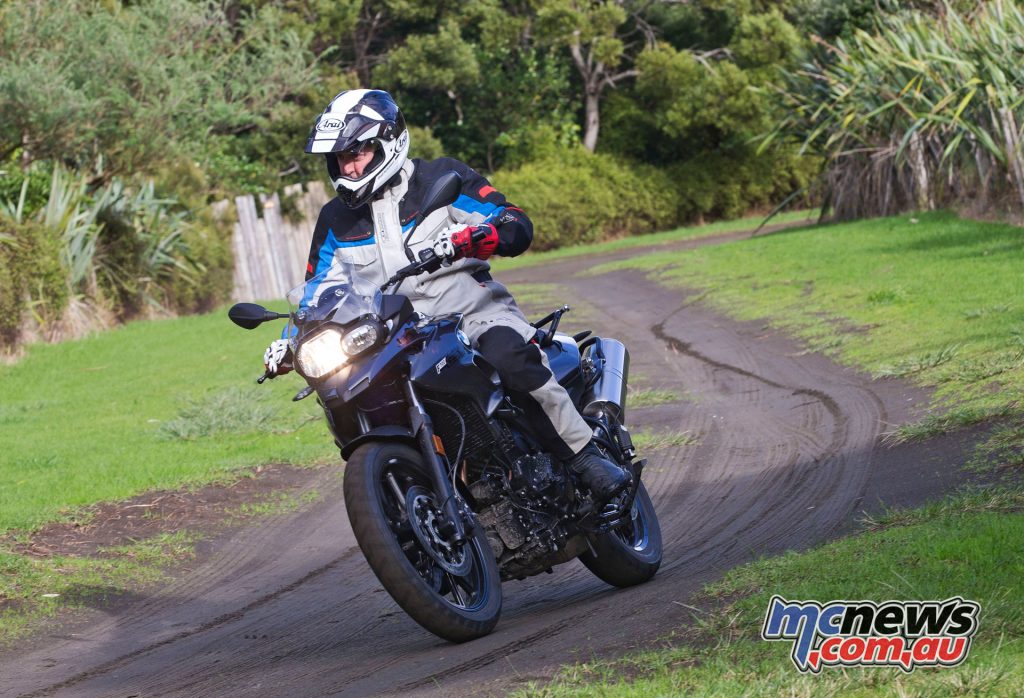
So it could be called a boring ‘jack of all trades’ bike; but I think that for someone who likes all kinds of riding but isn’t the fastest or the most capable adventure rider, it’s very, very competent, reassuring and accommodating. I haven’t even begun to reach the bike’s limits, and I have been trying!
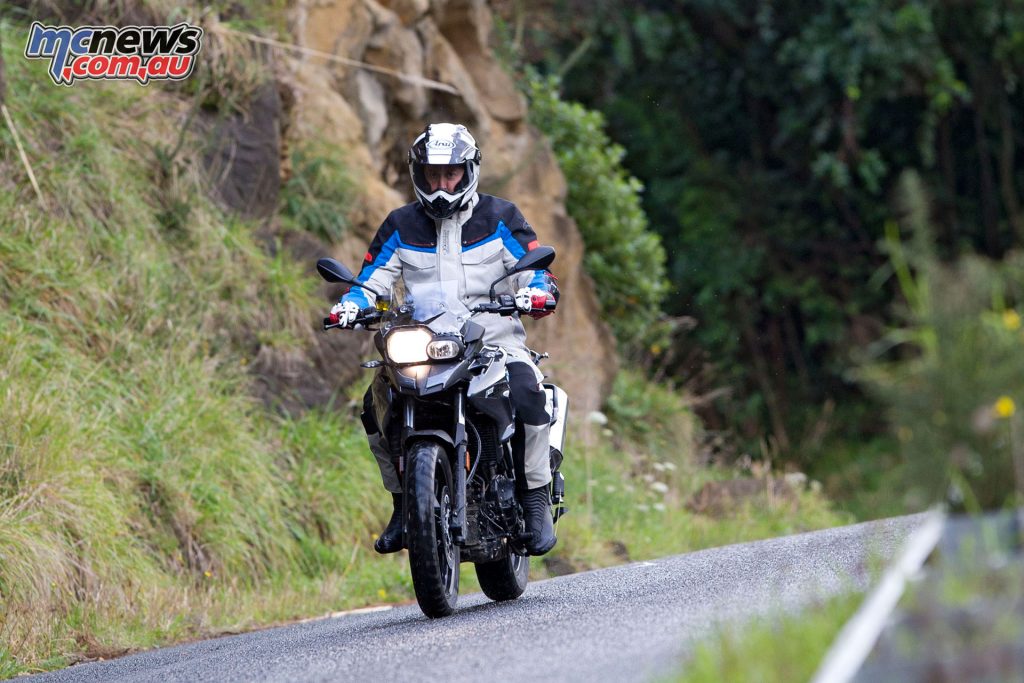
Currently the F 700 GS is on sale as part of BMW’s 2017 Modle Rollout campaign, thus at the moment the F 700 GS is available for the never seen before price of $13,890 Ride Away. A saving of almost $2000.
BMW F 700 GS Specifications
- Engine type: 798cc, water-cooled, DOHC, four-valve per cylinder, 360º four-stroke parallel twin
- Bore & stroke: 82mm x 75.6mm
- Compression: 12.0:1
- Claimed power: 55kW (75hp) @ 7300rpm
- Claimed torque: 77Nm @ 5300rpm
- Lubrication: Dry sump, forced
- Clutch type: Multi-disc wet clutch, hydraulic operation
- Starter system: Electric
- Transmission: Constant mesh 6-speed gearbox integrated into crankcase
- Final drive: Endless O-ring chain with shock damping in rear wheel hub
- Frame: Tubular steel space frame, load-bearing engine
- Suspension: Telescopic fork, 41mm front, 170mm travel front; Cast aluminium dual swing arm, WAD strut (travel related damping), spring preload hydraulically adjustable, rebound damping adjustable, 170mm travel rear
- Rake/trail: 26º/95mm
- Brakes: Twin 300mm discs, two-piston floating calipers, ABS front; Single 265mm disc, single-piston floating caliper ABS rear
- Wheels: Cast aluminium, 2.50 x 19-in front; 3.50 x 17-in rear
- Tyres: 110/80-19 front; 140/80-17 rear
- Seat height: 820mm (765-835mm available)
- Wheelbase: 1562mm
- Kerb weight: 209kg
- Fuel capacity: 16 litres
- Price – Currently on special from $13,890 Ride Away.
For more information or to book a test ride contact your local BMW Motorad Dealer: http://www.bmwmotorrad.com.au/























